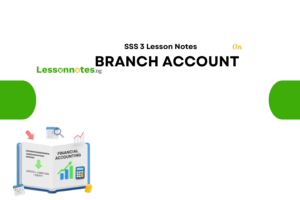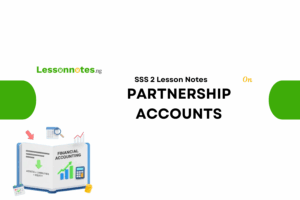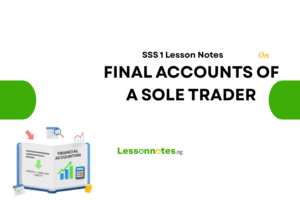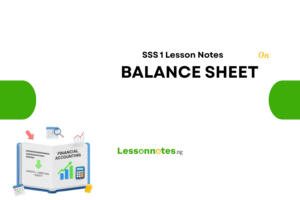Accounts Of Non Profit Making Organisations SS2 Financial Accounting Lesson Note
Download Lesson NoteTopic: Accounts Of Non Profit Making Organisations
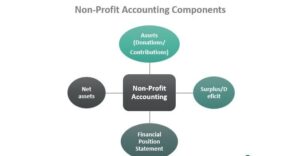
Non-profit-making organizations exist to provide services for their members. Examples are Sports and social clubs, dramatic societies, music clubs, etc.
Making a profit is not their main purpose, although many carry on fundraising activities to provide more or more services for the members. The organization is owned by all its members and not by just one person or a few of the members.
Records of money received and spent are usually kept by a member who is not a trained bookkeeper or accountant. Besides, these records of money received and spent, usually no other records are kept. Because of this, his topics are an extension of incomplete records treated in the previous weeks.
SPECIAL FEATURES OF THE ACCOUNTS OF NON-PROFIT MAKING ORGANIZATIONS
- An Income and Expenditure Account takes the place of the profit and loss Account.
- The words Surplus of Income Over Expenditure are used in place of Net Profit.
- The works Excess of Expenditure Over Income are used in place of net loss.
- The term Accumulated Fund is used in place of capital Account.
- A trading account is only prepared for an activity that is like trading and carried on to increase the club’s funds.
THE TREATMENT OF INCOME:
The income of a club should be treated in the club accounts as follows:-
- Subscriptions
The amount credited to the income and Expenditure Account should equal the annual subscription per member multiplied by the number of members. It may be helpful to prepare a subscriptions account as workings to decide how much should be credited to the Income and Expenditure Account Subscriptions in Arrears and subscriptions in advance should normally be treated as accruals and prepayments. However, each club has its policy for treating subscriptions in arrears or in advance. The two possible policies are as follows:-
- Cash basis: The amount received in the year is credited to the income and Expenditure Account. This may include a subscription for a previous year or paid in advance for the next year.
- Accrual Basis:– All subscriptions due for the year including those not yet received are credited to the income and expenditure Account it will usually be the Club’s policy to write off as bad debts, subscriptions that are not received the year after they were due.
- Life subscription and entry fees
Life subscription and entry fees are received as lump sums but should not be credited in full to the income and expenditure Account when received. The club should have a policy of spreading its income throughout say, five years. The amount received should be credited to a deferred Income account and credited to the income and Expenditure Account in equal annual instalments over a period determined by the club committee
3. Donations
Donations and legacies to a club are usually made for particular purposes, e.g. towards the cost of a new hall or equipment. Such a donation should be credited to an account opened for the purpose and expenditure on it debited to the account. Money received for special purposes should be placed in a separate bank account to ensure that it is not spent on other things.
- Supporting Activities
There are some supporting activities for a club’s main purpose. They raise money to supplement income from subscriptions. If they involve some sort of trading, a Trading Account should be prepared for them as part of the annual accounts, and the profit or loss should be transferred to the income and expenditure Account.
Non-trading activities, such as social get together, outings and dinner dances may be dealt with in the income and Expenditure Account with the income and costs being grouped as follows:-
N N
Annual dinner-dance
Sale of tickets 600
Less: hire of band (100)
Catering and drinks (240)
NET RECEIPTS 260






